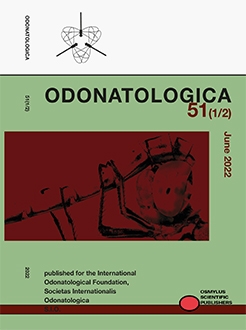Specimens and observations of Aeshna mixta Latreille, 1805, obtained in 2021 from Moscow and Moscow Province, Russia, lead us to the conclusion that what used to be regarded as this well-known Palaearctic species in fact represented two species. They differ in details of the abdominal maculation, including the conspicuous dorsal mark on the second segment, the relative length of the male epiproct, and some other characters. In addition, they also differ in the mitochondrial COI and COII gene sequences (with one odd specimen of A. mixta from Balkan Peninsula), but not in the ITS2 sequence. A potential hybrid male was observed. Analysis of photographic observations on the website “iNaturalist.org” suggests that the true A. mixta ranges in North Africa, Europe, the Caucasus, and West Asia, and extends north-east to South Ural and south-eastern Kazakhstan and east to Kashmir. The name available for the second species is Aeshna soneharai Asahina, 1988 stat. rev., bona species, described from Japan in subspecies rank. This species ranges in East Europe west to the longitude of Moscow and Voronezh, in Ural, Kazakhstan, Siberia, West China, Mongolia, the Far East including Russia, Northeast China, Korea, and Japan. Both species co-occur in Russia between the Don River and South Ural, in Kyrgyzstan and in south-eastern Kazakhstan. The iNaturalist photographs suggest that outside their contact zone, both species (especially A. mixta in southern Europe) exhibit some variation with respect to almost all characters that are diagnostic in Moscow Province but, on the other hand, are still identifiable using most of these characters. Aeshna soneharai seems not to share the swarming behaviour and the migratory abilities of A. mixta. The enigmatic Aeshna lucia Needham, 1930, is reconsidered a doubtful species rather than a synonym of A. mixta.
How to translate text using browser tools
1 June 2022
Aeshna soneharai Asahina, 1988, stat. rev., bona species – an overlooked member of the European fauna? (Odonata: Aeshnidae)
Vladimir V. Onishko,
Oleg E. Kosterin,
Alexander G. Blinov,
Igor S. Sukhikh,
Adeyinka T. Ogunleye,
Asmus Schröter
ACCESS THE FULL ARTICLE

Odonatologica
Vol. 51 • No. 1-2
June 2022
Vol. 51 • No. 1-2
June 2022





